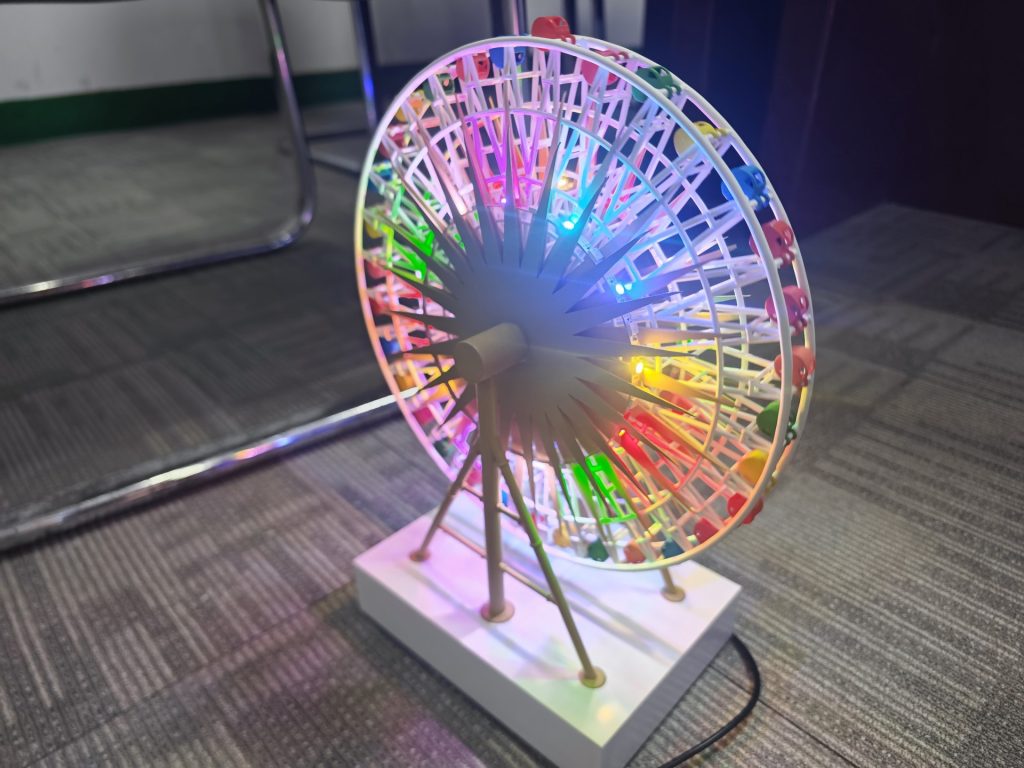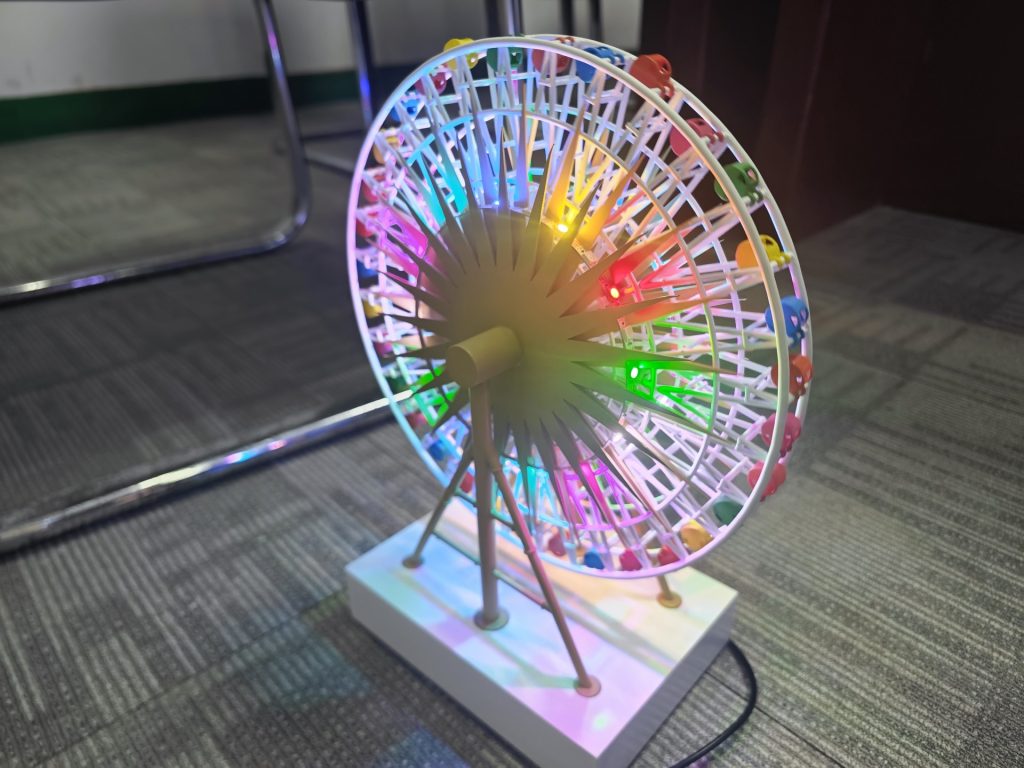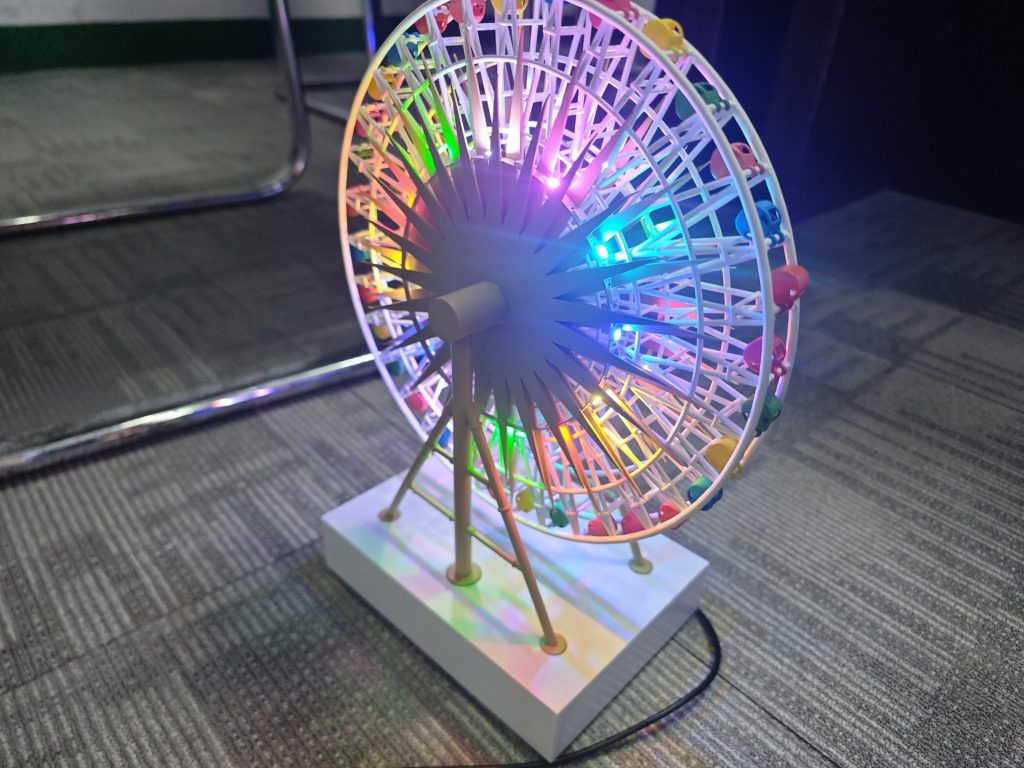Professional Case Study of Ferris Wheel Model Making
Professional Case Study of Ferris Wheel Model Making
1、 Professional production process flow

Design phase
Original design: Based on the real-life photos or design drawings provided by the client, a 1:1 scale restoration design is carried out, focusing on capturing the structural features and detailed elements of the Ferris wheel
3D modeling: Professional modeling software is used for 3D modeling to ensure accurate dimensions of each component and coordinated structural proportions
Model validation: Check the fit of each component through virtual assembly to ensure that rotating parts do not interfere
Production stage
3D Printing: Use high-precision industrial grade 3D printers to print the main structural components, with layer thickness controlled within 0.05mm
CNC Precision Machining: Metal parts are precision machined using CNC machining centers, with a surface roughness of Ra0.8 μ m
Manual trimming: Professional technicians finely polish each component to remove printed patterns and burrs

Assembly stage
Mechanical assembly: using a specially designed shaft and bearing system to ensure smooth and noise free rotation of the Ferris wheel
Electronic component installation: Wiring the lighting system, concealed installation of LED light strips and control systems
Dynamic testing: Conduct a 72 hour continuous operation test to check the durability of each component
2、 Professional material selection criteria
Main material
Frame structure: Made of aviation grade aluminum alloy profiles, surface anodized treatment, both lightweight and ensuring strength
Wheel spoke system: using carbon fiber composite materials, balancing lightweight and bending resistance
Cabin components: ABS engineering plastic injection molding, surface treated with UV protection
Decorative materials
Metal decorative parts: stainless steel etched parts, accurately restoring the metallic texture of the real Ferris wheel
Transparent components: Acrylic laser cutting, edge polishing treatment, simulating glass effect
Vegetation decoration: Simulated plants made of environmentally friendly resin materials, with long-lasting and non fading colors
Special effect materials
Lighting System: High Brightness, Low Power LED Beads, Adjustable Color Temperature
Shaft system: precision micro bearings ensure long-term use without jamming
Connection: 316 stainless steel screws, rust and corrosion resistant
3、 Professional post-processing technology

Surface treatment
Primer spraying: using automotive grade primer to enhance adhesion
Main color spraying: use professional model paint, multi-layer spraying to ensure uniform color
Aging treatment: perform slight aging treatment on metal components to increase realism
Detail depiction
Decal process: using water sticker technology to accurately reproduce the logos and patterns on the Ferris wheel
Metallic texture: mirror polishing or wire drawing treatment on metal parts
Lighting debugging: Professional lighting technicians adjust the brightness and color temperature of the lights to simulate different effects day and night
Quality inspection
Dimensional inspection: Use a coordinate measuring instrument to check key dimensions
Rotation test: Check whether the rotation is smooth and whether there is any abnormal noise
Lighting Test: Check if all lighting functions are functioning properly
Appearance inspection: Professional quality inspector inspects the surface treatment quality